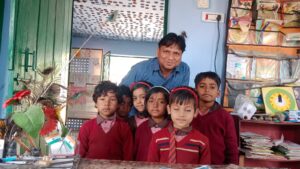During my UMANG Fellowship, I had the opportunity to work on Social and Emotional Learning (SEL) with children. I focused on three key skills:
1️⃣ Showing emotional awareness
2️⃣ Establishing and maintaining cooperative relationships
3️⃣ Problem-solving in groups
I planned a month-long intervention with second-grade students, designing a framework that covered a new theme each week—Self, Family, Friends, and Community. The activities seemed simple and easy, but when I began the baseline assessment, I realized a fundamental challenge: understanding oneself is not easy!
Why is it so hard to answer self-awareness questions?
When I asked children questions related to self-awareness, they found them difficult to answer. Even for adults, such questions are not straightforward:
🔹 “Do you recognize when you are getting frustrated or overwhelmed?”
🔹 “Do you realize when you need help or support from others?”
🔹 “Can you express your emotions clearly?”
It was challenging for the children to grasp and respond to these questions. I observed them closely, engaged them in discussions, and, with the teacher’s help, eventually completed my baseline tool.
A Shift in the Children’s Perspective
Even though these questions were tough, I noticed a gradual change in the children through SEL activities. They began recognizing emotions like happiness, anger, fear, and surprise and learned to express them with each other. They started reflecting on their work, sharing their likes and dislikes, voicing their wishes, and expressing their discomforts.
Why is Self-Awareness Essential?
Knowing yourself is not just a skill—it’s a necessity, especially in today’s rapidly evolving world. AI and social media often seem to know us better than we know ourselves. In such a scenario, maintaining our autonomy, setting goals, and working toward them becomes crucial.
SEL is not just something to be taught in classrooms—it is a lifelong process. When children learn to understand and regulate their emotions, they are not only able to make better decisions but also contribute to a more empathetic and inclusive society.
What’s Next?
From this experience, one thing is clear: we need to emphasize self-awareness—not just in children but in adults too. We must create environments where children can identify, express, and manage their emotions while also developing empathy for others.
SEL is not just a program; it is a journey—one that leads to deeper self-understanding, stronger relationships, and a better, more mindful world.
